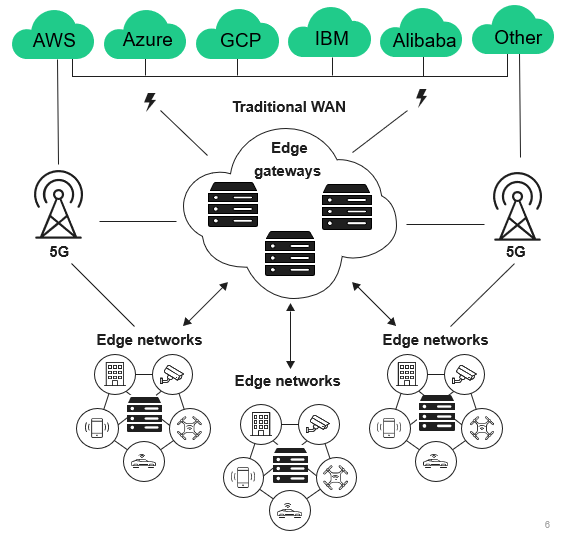Make Edge Computing A Key Investment for 2020
Traditional technologies are no longer addressing the growing needs of modern business; that’s why a massive quantity of tech and telecom vendors, and now a significant amount of enterprises and government agencies, are all expanding their investments in edge computing for 2020 — and why you should do the same.
Verizon and Amazon Web Services announced a new partnership on December 3, 2019 — 5G edge cloud computing — to help you build new applications, internet-of-things (IoT)-empowered capabilities, and net-new value innovations. Verizon will be providing secure connections to AWS’s nearby cloud data centers (edge gateways) so you can tie in its compute and storage services via its 5G network, which will dramatically be expanding across North America in 2020. Verizon also announced ThingSpace, which gives developers a full set of tools to build wireless IoT devices and launch solutions at the edge.
For more on this topic and how to best plan these investments, Brian Hopkins and I recently did a webinar — Innovate At The Edge — and last week published a downloadable PowerPoint (PPT) report entitled “A Decoder Ring For Edge Computing.” In both, we share Forrester’s updated definition of the term “edge computing” and how it can provide greater value to your business. So what can you get out of our new PPT report?
- Edge computing enables near-real-time application engagements. While local computing is not new, edge computing has emerged because technologies, such as content delivery networks and local edge devices and gateways, can now aggregate IoT sensor and mobile device insights to enable on-demand actions where people and physical processes exist, need them, and benefit from them. Want to dramatically improve customer experience, employee experience, and business achievements? This is powerful empowerment.
- Edge computing architectures have three major building blocks. Edge computing varies across different solution use cases and value scenarios, so it’s difficult to define just a single pattern for everyone. Our research does find three general building blocks core to most scenarios: edge management layers, edge networks, and edge intelligence fabric software.

Source: A Decoder Ring For Edge Computing
This downloadable PPT also covers:
- Enterprise and government use cases and case studies of how your peers are empowering their customers and advancing their market value with these empowering technologies.
- Functions and components of edge computing and the vendor landscape across all industries and the services already offered.
- Relevant open source software (OSS) being used to develop these solutions or components of them. And I’m currently working on a follow-up report on how and why CIOs and their app-dev teams should be expanding investment in OSS and looking to open source their own technologies. I just previewed this research today in Forrester’s latest webinar, The Case For An Open Sourcing Strategy.
Furthermore, in the latest FORRward: A Weekly Read For Tech And Marketing Execs, I noted that Cisco is looking to empower next-generation networking values starting in 2020. This leading network technology vendor’s innovation team has launched a new networking processor, Silicon One, which enables internet processing in excess of 10 terabytes per second per router or other device. This technology will greatly empower the forthcoming 5G networks’ bandwidth but also apply to other network types such as Wi-Fi, edge networking, and more. Walt Disney Studios partnered with Cisco to help drive its own innovation efforts to provide next-generation, high-performance video experiences, improved 4K movie making, and transformative theater experiences. Cisco also announced its next-generation routers (Cisco 8000) and network operating system (IOS XR7), which will help its customers deploy secure, high-scalability Silicon One solutions. It also collaborated with a variety of networking vendors, including Comcast, STC, and NTT Com, on this technology, all of which will be adding Silicon One to their own equipment.
Clients concerned about their growing network bandwidth requirements for video delivery, edge computing, high-bandwidth cloud connectivity, and other growing needs should see all these moves as empowering your roadmaps — all the more reason to start implementing edge computing into your company today so you can stay on top of your competition.
(Written with Emily Stutzman, research associate at Forrester)